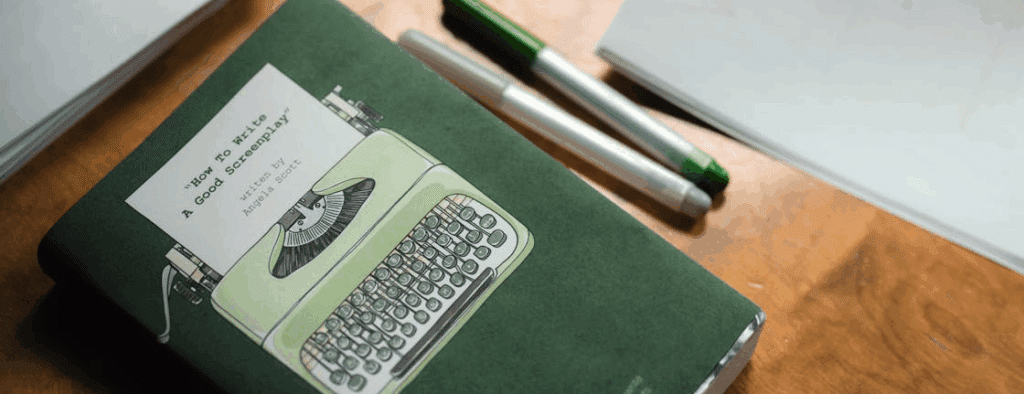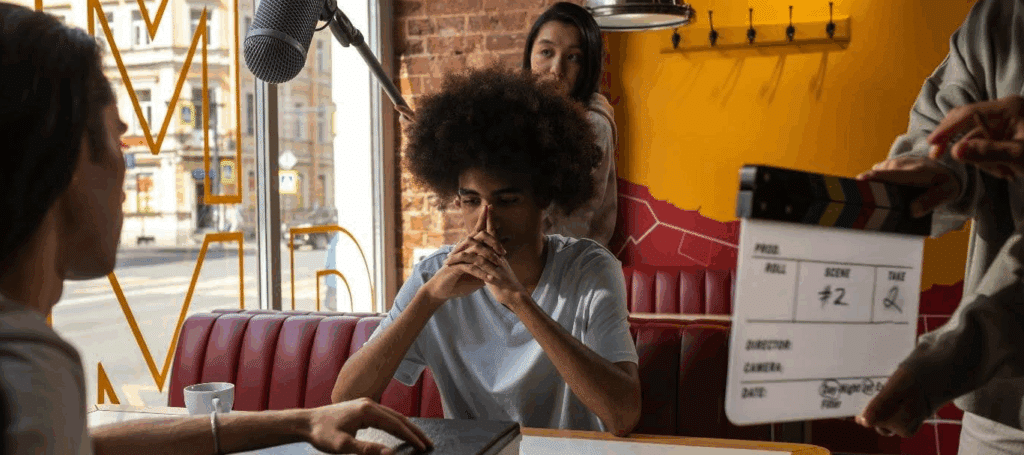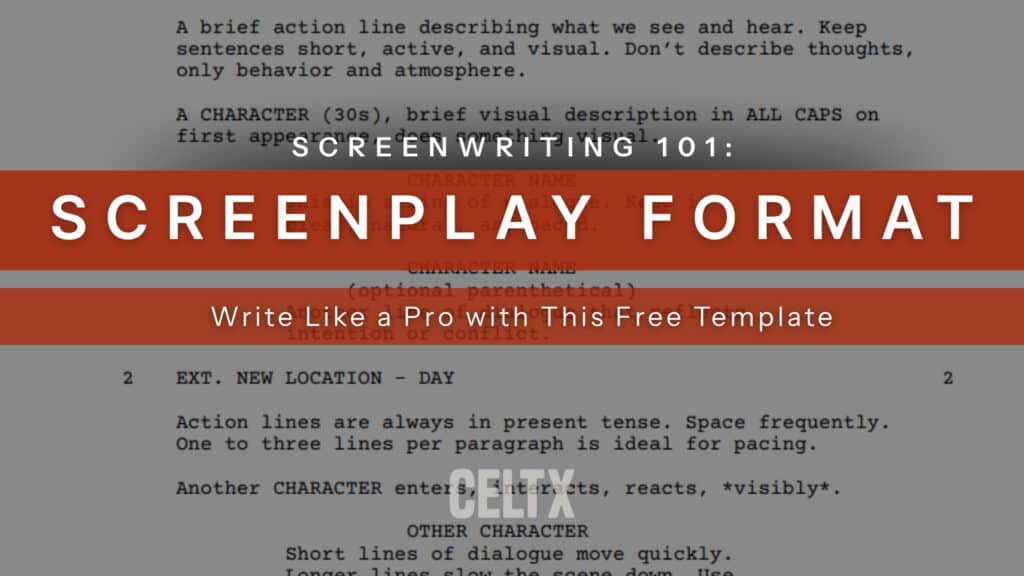
Let’s be honest, screenwriting can feel like you’re juggling flaming swords while blindfolded. You’re trying to build compelling characters, nail your structure, write snappy dialogue, and somehow make it all cinematic. But here’s a secret weapon that often gets overlooked: Literary devices.
While cinematic techniques like camera angles and editing rhythms shape how a story is told visually, literary devices are the invisible architecture that gives a screenplay its depth, meaning, and emotional power.
It doesn’t matter if you’re writing a psychological thriller, heartfelt drama, or a genre-bending sci-fi. Understanding literary devices can help you build richer characters, more compelling plots, and unforgettable moments.
We wouldn’t blame you for thinking that literary devices are just fancy tools for novelists or poets. Well, they aren’t!
So, in today’s blog, we’ll be exploring the umbrella of literary devices, which ones are essential for every screenwriter to master, and most importantly, how to effectively use them in your own screenplays.
Let’s get cracking…

What is a Literary Device?
A literary device is a technique used in writing to produce a specific effect, whether it’s to highlight a theme, reveal character or build tension.
Literary devices can be structural (like foreshadowing), stylistic (like metaphor or personification), or conceptual (like irony). It’s the stuff that makes your audience lean in and say “Wait… did that mean something?”
You’ll mostly be able to identify literary devices in novels and poetry. But in screenwriting, you’ll find literary devices are often embedded in dialogue, scene construction, character arcs, and even the visual motifs described in action lines.
Why Do Literary Devices Matter for Screenwriters?
Literary devices are the tools writers use to convey meaning, evoke emotion, and structure their stories. In screenwriting, they can specifically help you to:
- Add layers of meaning beyond what’s said or shown.
- Create emotional resonance through symbolism, irony, and subtext.
- Foreshadow twists and deepen themes.
- Engage audiences by making them active participants in decoding the story.
While film is visual medium, the screenplay is a literary one. Literary devices bridge the gap between the written word and the cinematic experience, allowing screenwriters to embed complexity and nuance into their work.

Literary Devices vs. Cinematic Techniques
Okay, so it is very easy to confuse literary devices with cinematic techniques. However, they do serve very different purposes. Allow us to explain:
Literary Devices
Tools used in writing itself: dialogue, structure, symbolism and subtext.
Cinematic Techniques
Tools used in the filmmaking process: camera angles, lighting, editing, sound design.
For example, foreshadowing is a literary device that hints at future events. A filmmaker might use a lingering shot on a broken clock to visually reinforce that foreshadowing, but the idea originates in the script.
Together, literary and cinematic techniques create a cohesive storytelling experience. The screenwriter lays the foundation while the director and crew build upon it.
Core Literary Devices to Master
And so, begins the next stage of our journey into the world of literary devices. These six essential devices are the building blocks of compelling screenplays, each serving a unique function in shaping plot, theme, and audience engagement.
Essential Literary Devices Overview
| Device | Definition | Why it Works |
| Foreshadowing | A hint or clue as to what’s to come later in the story. | Foreshadowing builds anticipation and rewards attentive viewers, making twists feel earned rather than arbitrary. |
| Metaphor & Symbolism | A metaphor compares two unrelated things; symbolism uses objects, characters, or settings to represent abstract ideas. | These devices add emotional and thematic depth, allowing you to say more with less through visual or conceptual language. |
| Dramatic Irony | When the audience knows something the characters do not. | Dramatic irony creates tension, humor, or poignancy by making the audience complicit in the unfolding drama. |
| Subtext | The underlying meaning beneath the surface of dialogue or action. | Subtext makes dialogue feel real and layered, reflecting that people rarely say exactly what they mean. |
| Theme | The central idea or message of your story. | Theme gives your screenplay coherence and emotional weight, establishing what your story is truly about. |
| Juxtaposition | Placing two contrasting elements side by side to highlight their differences or create unexpected meaning. | Juxtaposition allows for profound commentary or unexpected emotional impact by forcing a comparison. |
Deep Dive: Explore Each Literary Device
For a complete breakdown of each device, including practical writing strategies, iconic film examples, and Celtx tips for implementation, click the links below:
- Foreshadowing: Learn how to plant subtle seeds and execute satisfying payoffs in your script.
- Metaphor & Symbolism: Discover how to infuse your visuals and objects with thematic meaning.
- Dramatic Irony: Master the art of using audience knowledge to build suspense and tragedy.
- Subtext: Elevate your dialogue by letting silence and hidden meanings do the heavy lifting.
- Theme: Find and reinforce the central message that anchors your entire story.
- Juxtaposition: Use contrast to amplify meaning and create unexpected dramatic power. *Coming Soon
How to Weave Literary Devices into Your Script
Next, let’s get into the nitty gritty. Here’s how to actually use these devices without turning your script into a literary thesis:
Start With Theme
Before you write a single scene, ask: What’s this story really about?
Your theme is your compass. It’ll guide your metaphors, symbols, and subtext like a North Star.
Use Index Cards (Seriously!)
Map out your story beats and sprinkle in your devices:
- Where does foreshadowing kick in?
- What symbols recur?
- How does subtext shift over time?
Celtx’s Beat Sheet feature is perfect for this. It’s like storyboarding, but for your brain.
Layer Your Dialogue
Avoid the dreaded ‘on-the-nose’ syndrome and instead let your characters dodge, deflect, and disguise their true feelings. That’s where the magic happens.
TRY THIS EXERCISE: Write a scene where two characters argue about dinner, but it’s really about their crumbling relationship. That’s subtext in action.
Repeat with Purpose
Symbols and metaphors gain power through repetition, but they should evolve. Think of it like a musical motif that changes as the story progresses.
Use Visuals Wisely
Your action lines can carry literary weight. Instead of “She enters the room,” try: “She steps into the room, her shadow stretching across the family portrait.”
Boom! Instant symbolism.
Workshop with Intention
When you share your script, ask:
- Did the subtext land?
- Did the foreshadowing feel earned?
- Did the theme come through?
Feedback is crucial as it helps you fine-tune the subtle stuff.
Rewrite, Rewrite, Rewrite
Your first draft is clay. Rewrites are where you carve in the details. Look for places to add depth, reinforce motifs, and sharpen your devices.
FAQs
Foreshadowing, metaphor, dramatic irony, subtext, symbolism.
Sure! In Get Out, the “Sunken Place” is a metaphor for powerlessness and marginalization. It’s chilling, powerful, and unforgettable.
Not necessarily, but it helps. Some writers discover their devices organically during the drafting process. Others plan them like chess moves.
Here’s a middle ground:
– Start with your theme
– Choose a few symbols or metaphors that support it
– Let subtext and irony emerge naturally in scenes
And remember, literary devices often shine brightest during rewrites. So don’t stress if they’re not all there in draft one.
Absolutely! In fact, you should. Think of literary devices like spices in a dish. Each adds its own flavor, and together they create something rich and memorable.
Take a scene from The Social Network:
– Subtext drives the tension between Mark and Eduardo
– Symbolism appears in the business card “I’m CEO, bitch”
– Theme pulses beneath it all: ambition vs. friendship
Conclusion
Screenwriting is a wild ride. One minute you’re staring at a blank page, the next you’re deep in a scene where two characters say everything except what they mean, and somehow, it works. That’s the magic of literary devices. They’re not just academic concepts or clever tricks. They’re the emotional undercurrents, the thematic glue, the quiet whispers that make your story unforgettable.
Literary devices are your secret weapon. They’re what make your story stick, sting, and sing. Whether you’re writing a gritty drama or a surreal comedy, these tools help you craft stories that mean something.
So go ahead! Layer in that metaphor, plant that foreshadowing, and let your subtext do the talking.
Focus on your story, not your formatting.
Let Celtx’s Script Editor automatically apply all industry rules while you focus on the story.
Up Next:

Screenplay Format 101: Write Like a Pro with This Free Template
Now that you’ve mastered core literary devices like foreshadowing and subtext, turn your attention to the industry-standard rules. Learn the secrets of professional screenplay formatting, scene headings, action lines, and dialogue to ensure your script is polished, professional, and ready for production.
